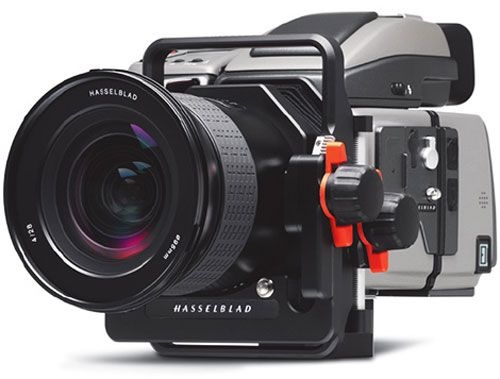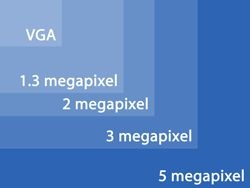 Everything I've read and heard the ads; This device has 12.2 mega-pixel, it takes 14.4 mega-pixels, and, of course, the room price reflects how many pixels on the sensor. Questions arise, "how many pixels do I need", and "What is a mega-pixels, anyway?"
Everything I've read and heard the ads; This device has 12.2 mega-pixel, it takes 14.4 mega-pixels, and, of course, the room price reflects how many pixels on the sensor. Questions arise, "how many pixels do I need", and "What is a mega-pixels, anyway?"
Simply put, a mega-pixel is a million pixels per inch. A pixel is a single point on an image with a particular color and brightness, and grouping these points along an image is formed. Pixel size relative to the image determines how sharp the final image will be and how much the image can be increased before quality suffers. Take any picture and zoom in enough and, possibly, the pixels will be visible as blocks of color or shades of gray. The size and amount of pixels in an image, also contributes to the file size.
With many options available, pixel quantity is a major factor in determining what is bought, and the room listening to the announcements, just the most will suffice. In reality, the most important thing to consider when buying a camera is what will be used for. If you are going to make poster-size pictures to hang on the wall, then Yes, the ads are correct and should spend the money for at least 14.4 mega-pixels, if not more. However, if you have a blog and you want to post images to it, or any web site actually extreme than 14.4 is overkill; in fact, any camera you buy today will be extreme overkill for web-based images. Screen resolution is listed as pixels horizontal X vertical pixels per inch, so that a screen set at 1280 X 1024 will have to, 720 pixels per inch, or over 1.3 mega-pixels. Any higher resolution will be lost as the computer translates the file into an image to be viewed on screen, and the file size will slow down the transfer of lost files, particularly when sent via email. The same is true for digital frames, which usually have an even lower resolution than a monitor.
Inches and pixels test
 Other factors to be taken into account, together with the amount of pixels. ISO measures your ability to capture light sensor and a higher ISO allows photography in lower light, but with a loss of image quality; with a higher ISO, the images will start to look grainy and the colors will be less vibrant. Most point and shoot cameras have a preset, usually ISO 400, and a camera with adjustable ISO is more expensive, but well worth the extra price often. Of course, the optics are a major feature of a camera, whether film or digital, and no matter how many pixels the camera has, if it has weak, only optics result in blurry images will be rendered very faithfully.
Other factors to be taken into account, together with the amount of pixels. ISO measures your ability to capture light sensor and a higher ISO allows photography in lower light, but with a loss of image quality; with a higher ISO, the images will start to look grainy and the colors will be less vibrant. Most point and shoot cameras have a preset, usually ISO 400, and a camera with adjustable ISO is more expensive, but well worth the extra price often. Of course, the optics are a major feature of a camera, whether film or digital, and no matter how many pixels the camera has, if it has weak, only optics result in blurry images will be rendered very faithfully.
"Mega-pixels" is sexy for laughter manufacturers and retailers of cameras, and while important, is only one facet that must be taken into consideration with any digital camera purchase. More importantly, having a good idea as to how the camera will be used is the most important datum in order to determine what camera to buy.



